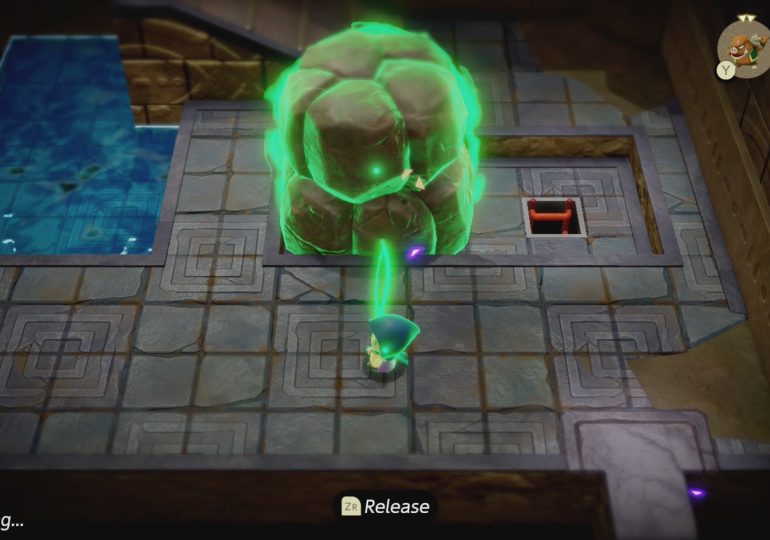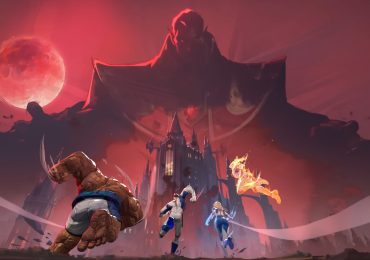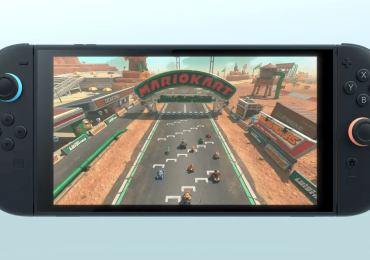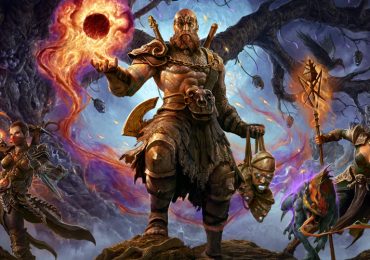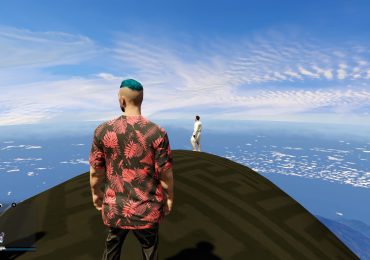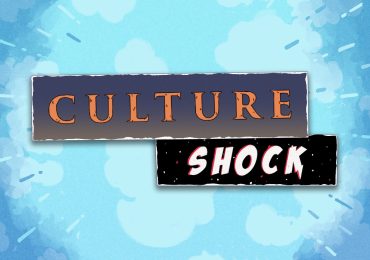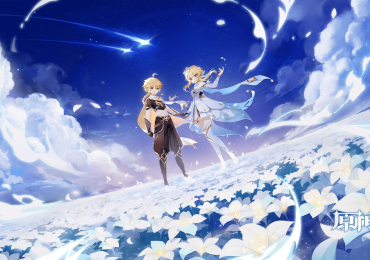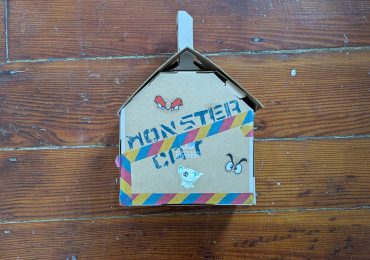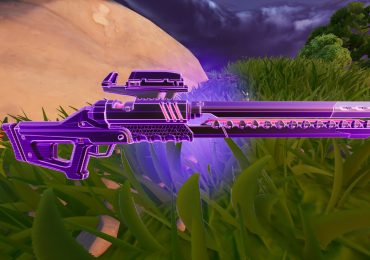Zelda games — that is, games in The Legend of Zelda franchise fronted by Link — have always had a puzzle-y element to them, up to and including the open-world Breath of the Wild and Tears of the Kingdom. There are always keys to find, abilities to hone, and tools to unlock that open new paths and solutions.
In the best way, The Legend of Zelda: Echoes of Wisdom doesn’t change or challenge that, while also incorporating gameplay elements from the more recent, open-world games. It’s a classic, top-down Zelda game in the style of 2019’s Link’s Awakening remake that plays like Tears of the Kingdom.
The Legend of Zelda: Echoes of Wisdom takes the non-combat elements of the Zelda franchise and elevates them to a core gameplay mechanic. The most obvious carryover is Zelda’s ability to conjure Echoes. These are temporary incarnations of (certain) objects and creatures you’ve seen in your adventure. For example, the first time you see a table, you can use Zelda’s magical Tri Rod wand to save that table as an Echo and then summon up a table any time, anywhere. These Echoes can be climbed on, shoved around, tossed, and then dismissed with a wave of Zelda’s Tri Rod. It’s like a Zonai devices-only TotK run. Even a version of Link’s Ultrahand from TotK shows up here with Zelda’s Bind ability, which allows her to move most items (both Echoes and real) around with the help of her friend Tri.
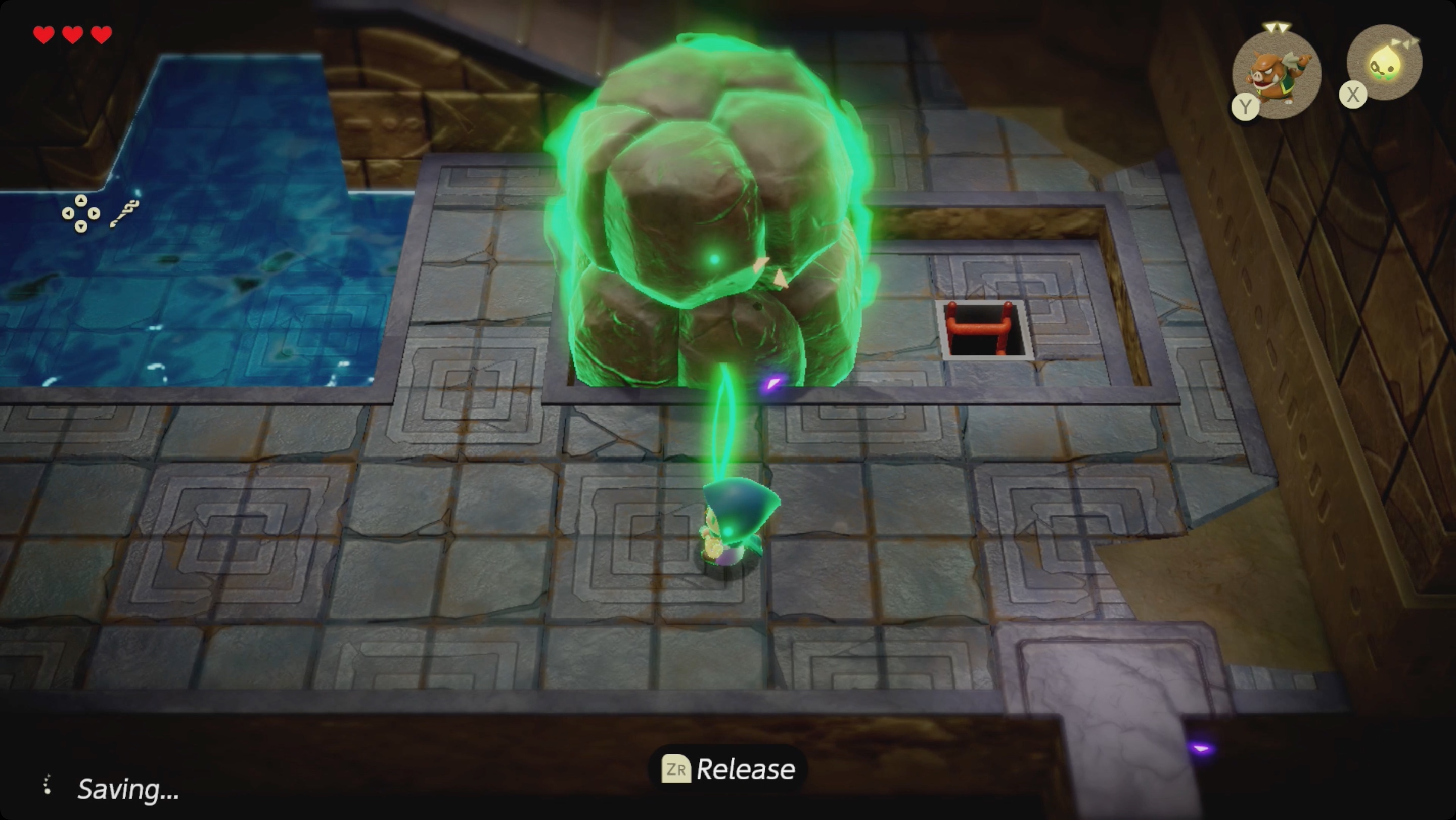
Image: Nintendo via Polygon
Echoes are the building blocks of every solution. Each problem is solved by conjuring Echoes of tables, boulders, trampolines, or crates — problems like how to jump up to a two-tables-high ledge, or how to trigger two-crate-sized switches at the same time.
Sadly, though, Echoes don’t allow the same free-for-all creativity sandbox that, say, the Zonai devices in TotK did. There’s no physics built into Echoes of Wisdom’s Echoes. I can’t make a stack of precariously balanced furniture and then remove the bottom one and watch them cascade across the screen in calculated chaos. Instead, removing the bottom table in a stack of tables… makes the tables drop to the floor, shortening my stack of tables by one.
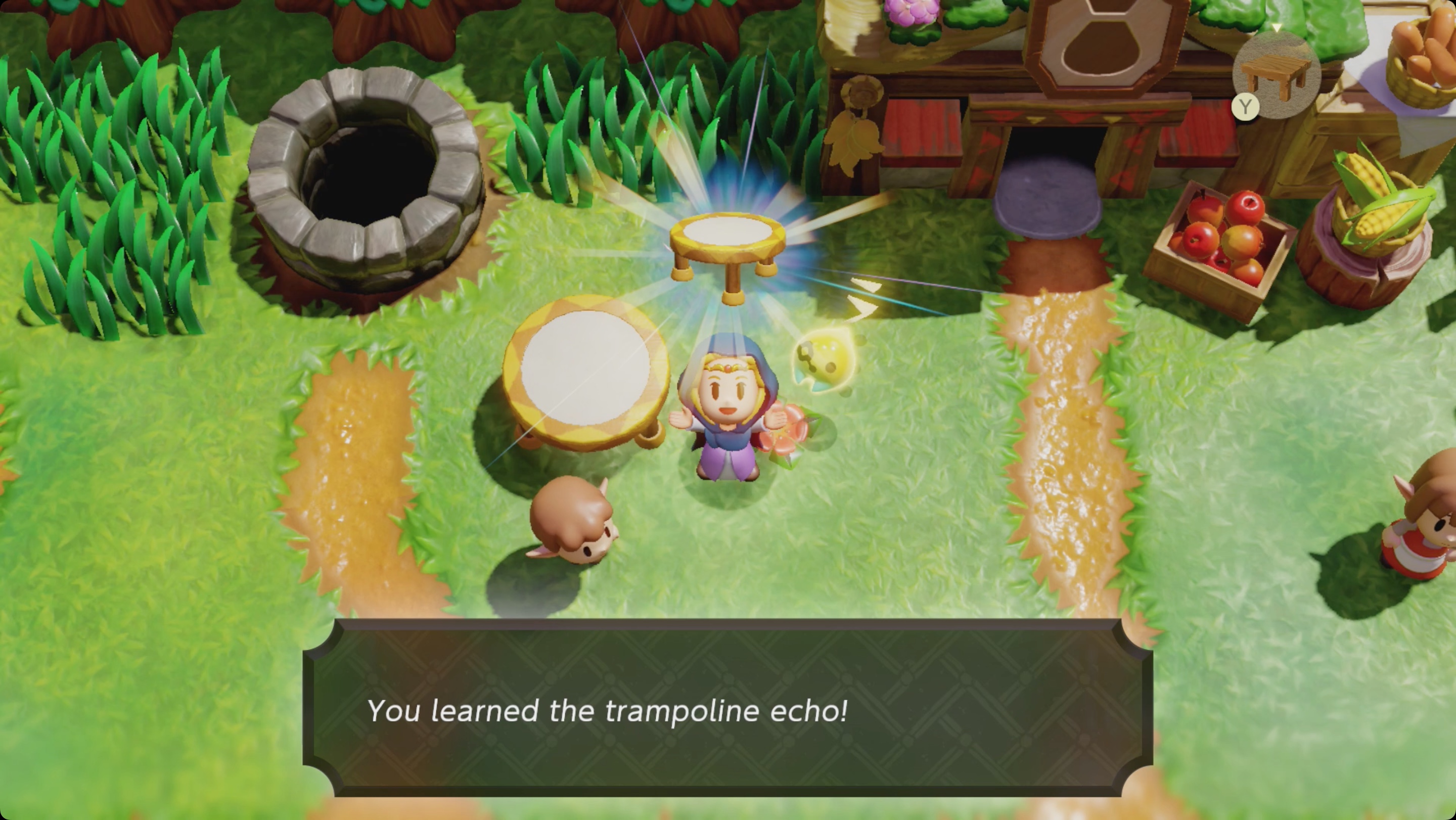
Image: Nintendo via Polygon
And that directness of use creates two categories of Echoes: fight-for-you Echoes and climb-on-stuff Echoes. Echoes of Wisdom is still a Zelda game, after all, so the world is full of eminently stabbable baddies who, until they are stabbed, seek only to ruin your day. You’ll still have to fight — except you (mostly, more on this in a second) can’t — so you’ll conjure Echoes of Bokoblins or slime-like Zols to fight for you. Zelda can jump, but not very high, so you’ll need to conjure table Echoes to reach most ledges.
That’s not to say that every puzzle and navigational challenge is as simple as “conjure a table.” There’s a satisfying difficulty to a lot of the puzzles — those few minutes of confusion followed by a eureka moment . That challenge-to-aha pipeline really only failed once; a later-game boss completely baffled me and I had to turn to a co-worker for help.
It turns out the solution was one of the random Echoes I’d never used before and hadn’t even considered using in the fight. But there were no context clues or indications to the solution — it was just one out of dozens of Echoes I hadn’t tried yet.
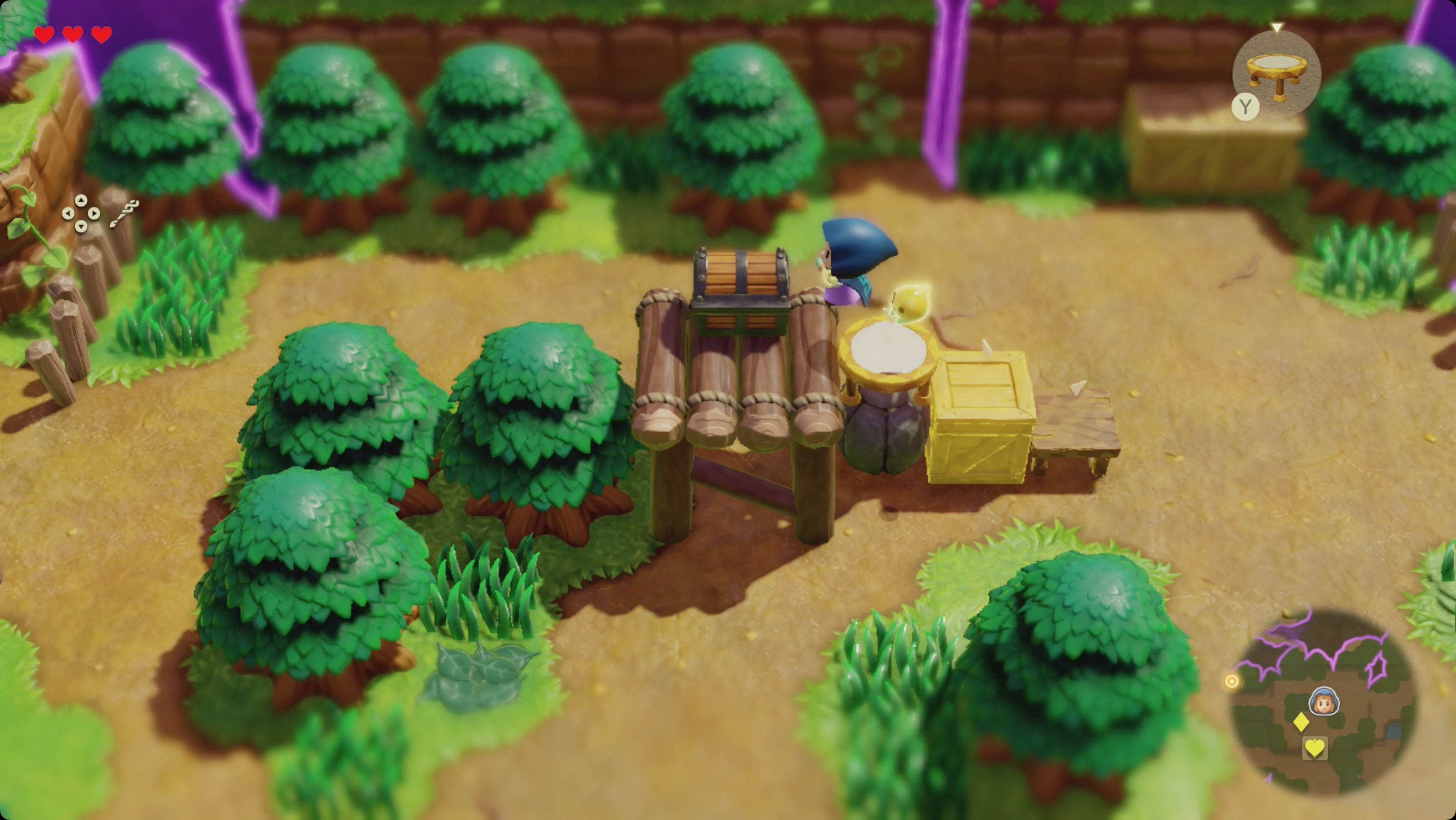
Image: Nintendo via Polygon
I fell into that trap for a reason that will probably also happen to you: I ended up finding favorites of each of the categories of Echoes and relying a lot on those favorites. The game even concedes this point and gives you the ability to sort your Echoes by “most used.” Tables were my go-to for climbing until I found the superior water block Echo. My go-to for combat was as many Boomerang Bokoblins as I could conjure with their swarm of damaging projectiles. If you’re like me, you’ll probably fall into the habit of only using those. Having beaten the game, there are probably a dozen or more Echoes I literally never used — I just didn’t need them.
Every vertical challenge can be solved with a stack of Water Echoes. Nearly every combat encounter can be solved with my small herd of low-level Boomerang Bokoblins. But instead of feeling boring, it felt more like a rote solution where I could use the tools I knew worked best and was familiar with, even if I had a dozen other options that might work just as well.
None of this is to say that Zelda is completely helpless on her own. Zelda can be a little more direct with her offense once she finds Link’s sword. That allows her to temporarily take on the glowing “Swordfighter Form” and dish out damage on her own without needing Echoes to fight for her. But even that feels more like a concession than a mechanic — it’s a Zelda game, so you just need to swing a sword at some point, even if it is, explicitly, Link’s sword.
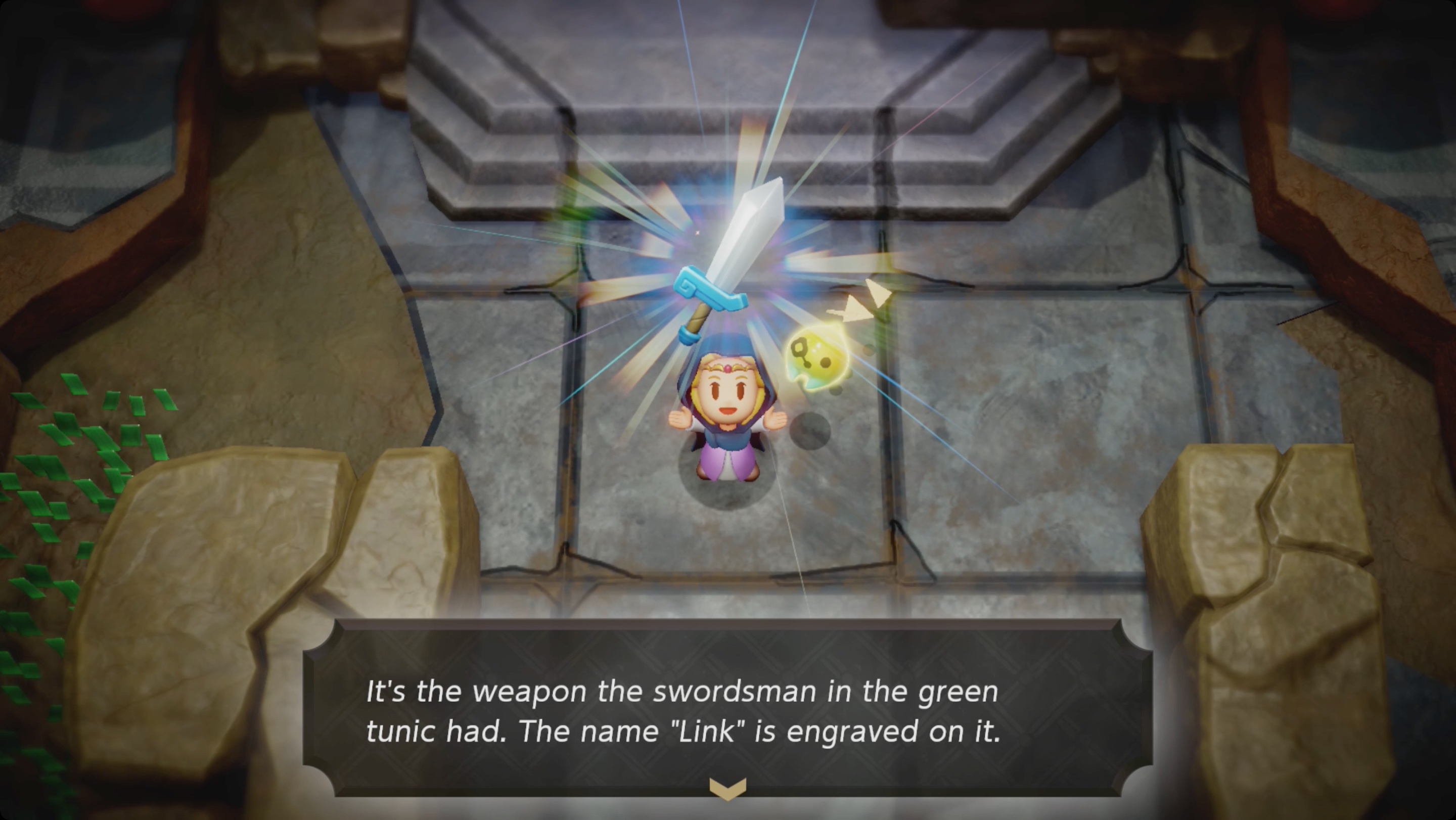
Image: Nintendo via Polygon
Which brings us to something that needs to be acknowledged about this game. This isn’t the first time that Zelda has been a playable character. This isn’t even the first time she’s been the main character in the series that bears her name — that honor goes to Zelda: The Wand of Gamelon, a CD-i game that is both non-canon and which I legitimately hadn’t heard of until I looked it up. Echoes of Wisdom is still a big deal — an official, Nintendo-developed Zelda game in which you play as Zelda. But Zelda’s portrayal in Echoes of Wisdom may seem passive compared to how Link’s games have gone for him. Like the way she gets a magic wand as opposed to a sword, for example. Or having to summon others to fight for her most of the time instead of fighting for herself.
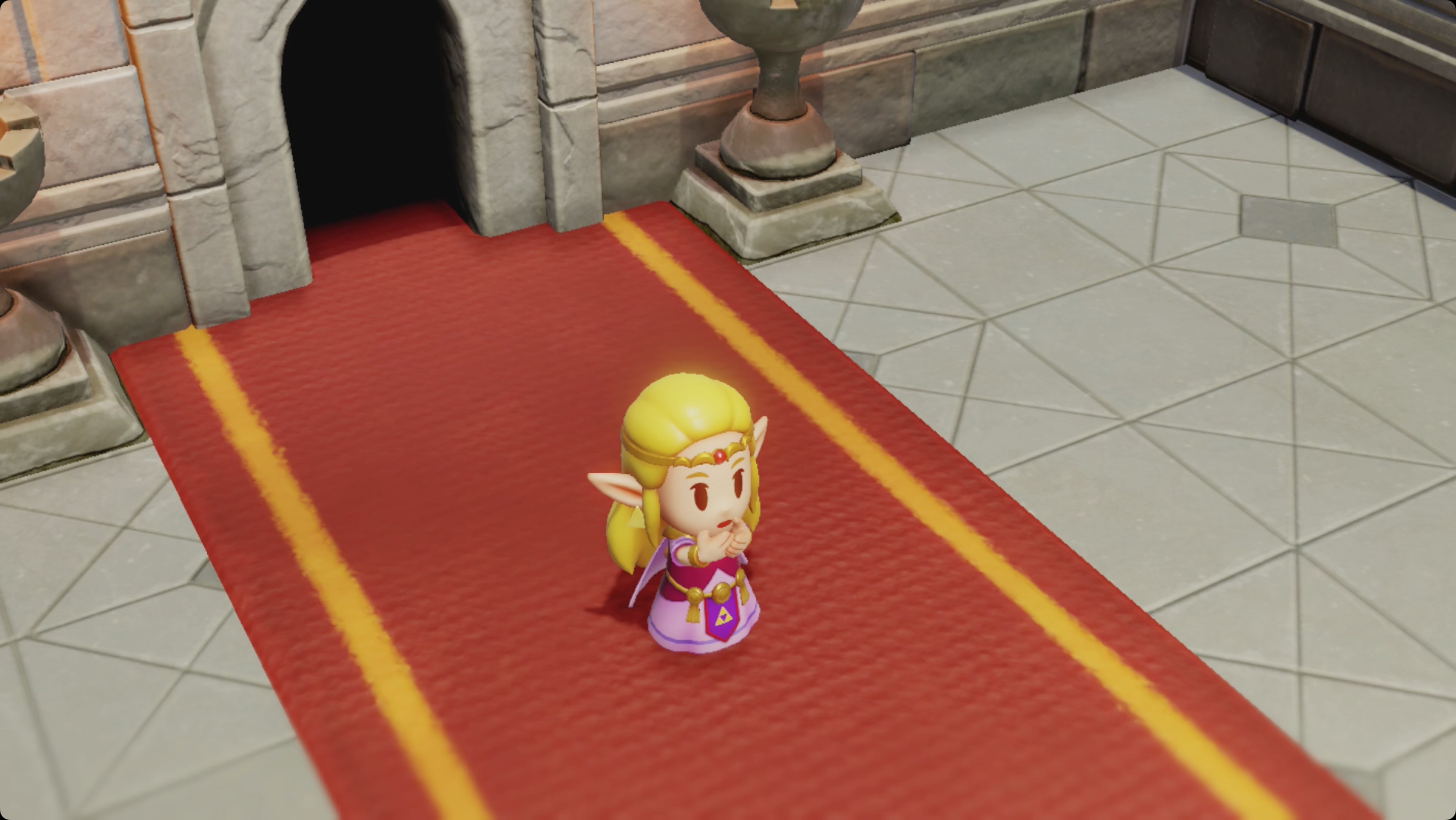
Image: Nintendo via Polygon
When Tears of the Kingdom came out, I spent a lot of time reading about The Legend of Zelda series lore to write a pair of articles about the Zelda timeline. My conclusion was ultimately that the timeline didn’t matter because Zelda and Link weren’t important as individuals but rather as (reincarnated) concepts. Zelda plays that role here, just like Link plays his.
There’s always a Triforce consisting of Wisdom, Courage, and Power. There’s always a Princess to embody Wisdom. There’s always a Champion embodying Courage. There’s always a Big Bad seeking Power.
As much as Echoes of Wisdom brings a real “this ain’t about him” energy to the series, it’s still a story just as much about Link as it is about Zelda. The context gives a justification (take it or leave it) for Zelda’s more passive role.
But does it work?
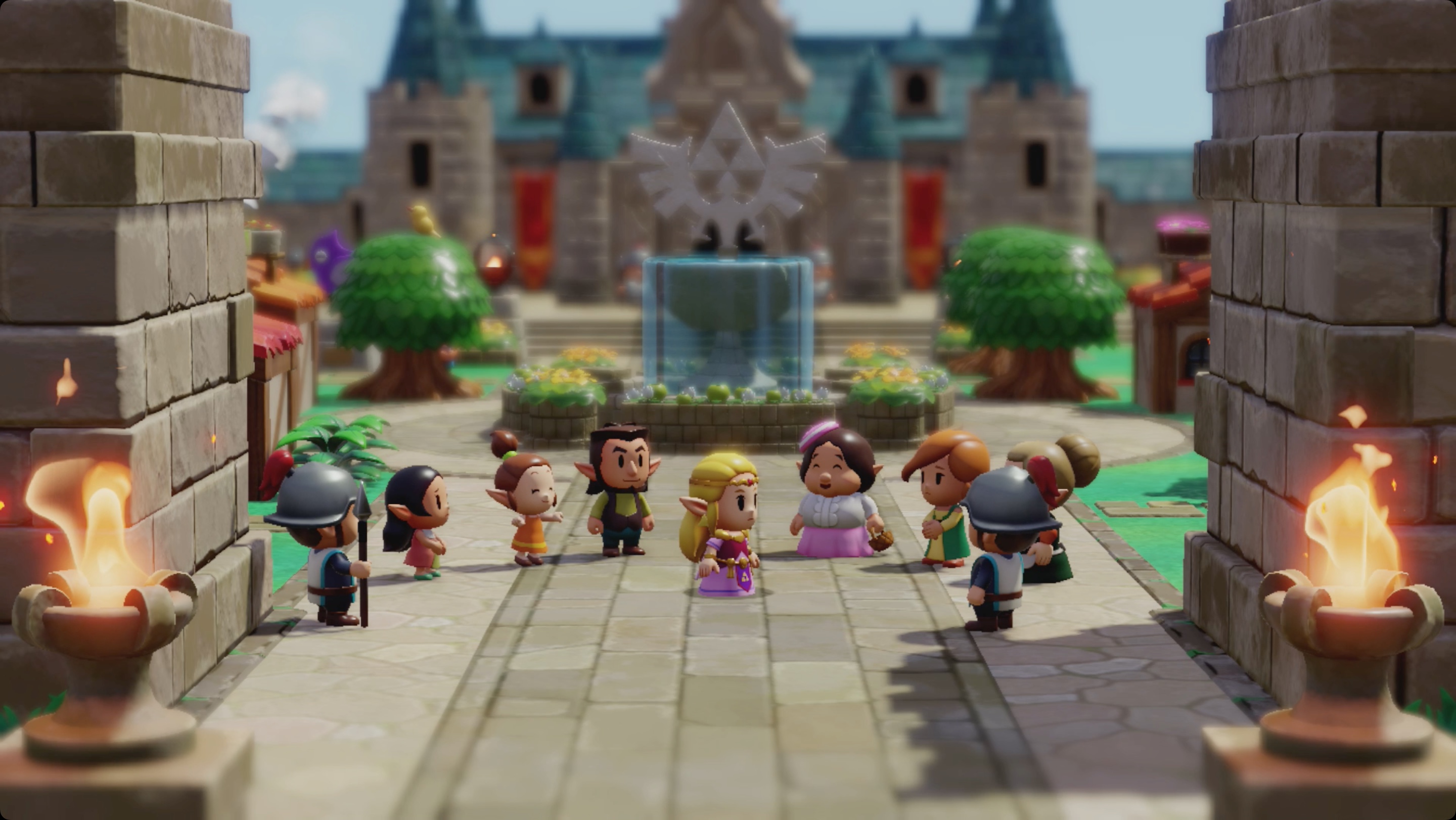
Image: Nintendo via Polygon
Simply put: It does. It’s a fun as hell game. It’s challenging and satisfying. And it fits neatly in the established mythos as another incarnation of our beloved hero(es). There’s a real sense of accomplishment in conducting a herd of boomerang-wielding Bokoblins as they pepper every enemy with attacks and then conjuring a bridge made of beds to cross an unjumpable gap. Sure, you might not be swinging the sword, but Echoes of Wisdom proves that the pen — or the bed, table, crate, or boulder — can be even mightier.
The Legend of Zelda: Echoes of Wisdom will be released Sept. 26 on Nintendo Switch. The game was reviewed using a pre-release download code provided by Nintendo. Vox Media has affiliate partnerships. These do not influence editorial content, though Vox Media may earn commissions for products purchased via affiliate links. You can find additional information about Polygon’s ethics policy here.
